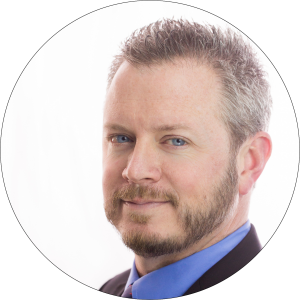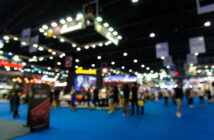Gearing Up for Expo
AAMA Chief Fills Us In On FECs & Show Plans
Q: How was the AMOA States Council Meeting in San Antonio and how is the Expo shaping up?

Chris Felix
A: I thought the meeting went very well. During the years I’ve attended, the program has drifted to be more of an interactive sharing between the operators, which I think is a real positive. They spent a good bit of time talking about what’s working for them and what’s not.
Something they did this year that I enjoyed was that they set up different panels for discussion on various topics. For example, they had a one called “Shaping the Future – States Working at the Grassroots Level,” which included different state association reps talking about how to build membership and grow their groups.
They also had sessions spread throughout the meeting in which each rep would come up and give a presentation about what was going on in their state, and what topics they were dealing with on a daily basis. You can learn so much in each of these.
I’ve told a lot of people how valuable this meeting is and can’t stress it enough. For CPI, the company I work for, a sponsorship is $600. When you add in my travel, hotel room and such, it probably totals $1,200. But from a value standpoint, it is easily the most important $1,200 I spend over the course of the year. I advise anyone to go if they get the chance to do so. The AMOA is allowing more manufacturers to come in at different sponsorship levels. Being able to spend more time with operators is great.
I do have to tell you that some of these manufacturer talks can get a little contentious at times. A manufacturer will say things that some of the operators really don’t want to hear, but that’s part of being there. As an example, some states are looking to gaming and it looks as though Pennsylvania has a chance to get it approved this year. As manufacturers, we’re designing for what the next market is going to be, and for the most part, that means the manufacturers aren’t necessarily building for bar locations. Instead, they’re building for the FEC or gaming environments.
A good thing I did hear people talk about was trying to get the route operator to think differently in terms of machine placement. With ongoing bar closures, there are just fewer route locations to place equipment.
Speakers at the meeting were encouraging operators to look at bowling centers, pizza places, FECs and so on as places to set equipment. I would say that for the progressive operators, that message was received very well. But, as you would expect, there were some who have a hard time looking at doing things differently from what they’ve always done. With a decline in bar locations, it’s important for operators to look outside what they do now and ask “Where else can I put a game?” and “Where else can I make money?”
There was a good discussion about using machines that you wouldn’t necessarily view as a bar piece. I think it was someone from Betson who brought up using photo booths and I think those might open new doors. It’s a good question for operators to ask: “Are there places I could put a photo booth where I couldn’t put a traditional bar piece?” This concept of trying to figure out new placements was the best part of it for me as it encouraged the operators to look beyond the current “bar location” mentality.
If I think back about the history of the amusement machine industry, it was always set up a machine, plug it in for play and then go back to either make collections or to fix it. Now you have redemption machines requiring you to fill it with the right product mix, which requires a lot more time and effort. It’s certainly not as simple as plugging it in and walking away. On the vending side, those operators have always dealt with challenges like inventory replacement and costs. As things have changed on the amusement side, I think that it’s proven to be challenging for some people.
Overall, the state association meeting was definitely more upbeat than it’s been in the last couple of years. I do feel that it’s getting to be the same people year after year, but I don’t know yet if that’s good or bad. I would like to see some new people attend because there’s so much to learn. For example, I took one of my product marketing people, who hadn’t been there before and was also new to the amusement industry. He learned a lot on this trip.
Show Time in Las Vegas
As president of the AAMA, the Expo is relatively a nerve-wracking experience and there are a lot of details that come up at the last minute. The co-location with the bulk vending association has been good and I’m really glad that agreement has been extended. The laser tag convention is also back for another year. I think they both tie in well to the push we’ve made to the FEC side. We’ve had a lot of success with the FEC committee and its subcommittees so far and have some exciting announcements planned for the Amusement Expo.
The show continues to build nicely. We expect to have a completely full floor, but always leave a little wiggle room to accommodate last minute exhibitors. From an exhibitor standpoint we’re doing great, but we still need to find a way to drive more attendees so we can fill the aisles with people and bring value to the exhibitors.
Honestly, I think it’s going to be a great show and I encourage people to come. There’s so much to see and learn.
Chris Felix, National OEM Sales Manager for MEI Conlux/CPI (Crane Payment Innovations), worked for MEI prior to its acquisition by Crane. Felix, who was elected to his two-year term at the AAMA Annual Meeting and Gala in August, has been honored with the group’s President’s and Joe Robbins awards. A U.S. Navy veteran, he served as a Nuclear Reactor Operator aboard the USS Minneapolis St. Paul and the USS Greeneville submarines. When he’s not busy with work or association duties and travel, you might find Chris out training for a marathon.



